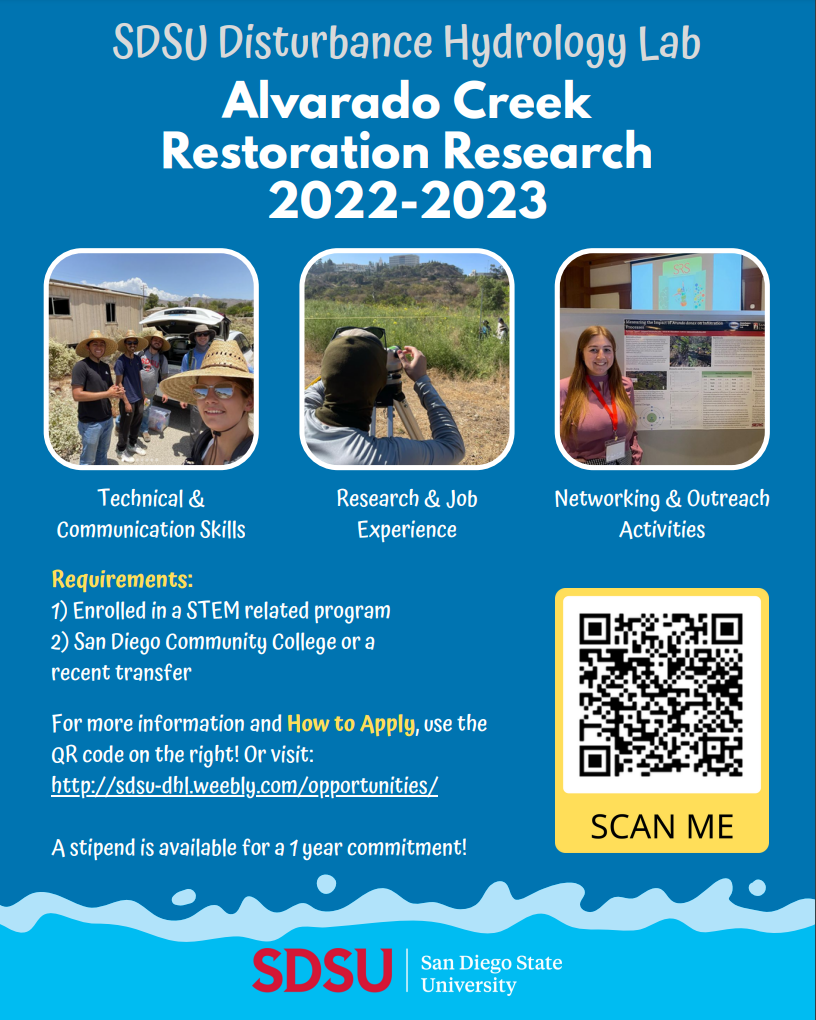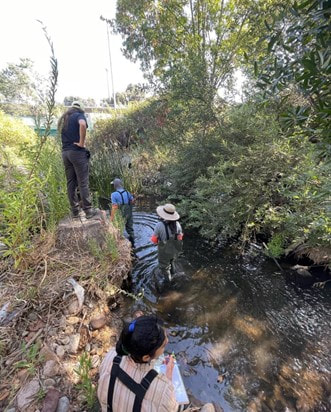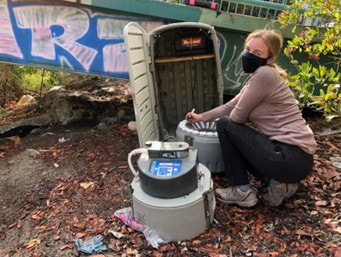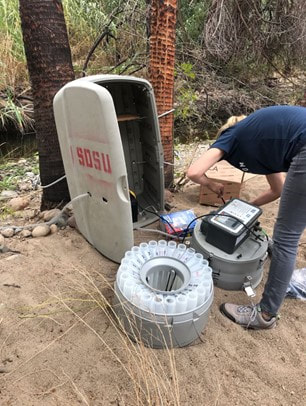Apply for a 2022-2023 Undergraduate Research Internship with the Disturbance Hydrology Lab!
|
Human-ignited fires, drought, large fuel loads, and non-native vegetation have made urban streams and rivers into avenues for fire movement. The goal of this NSF-funded research is to understand and predict changes in vegetation, soil, and stream processes that occur after fires. Areas adjacent to streams, called riparian zones, are important in controlling the impacts of fires by regulating the release of pollutants and the erosion of soil into streams. Yet these riparian processes are poorly understood in urban stream corridors. Field work and remote sensing methods provide detailed data images of the Earth's surface. Examining repeated measurements and images through time can allow researchers to document changes in erosion and to relate those changes to differences in riparian vegetation and stream conditions. The data collected from this project can be incorporated into mathematical models to make predictions about erosion and sediment following fires. Read about past undergraduate projects on our undergrad blog.
Anticipated internship projects for AY 2022-2023 (see below for brief descriptions): Project 1: Hydrology and geomorphology field work and data analysis Project 2: Hydrologic measurements and storm sampling The DHL Research Internship is a 10 month program that will take place during the 2022-2023 Academic Year. Interns will receive monthly stipends of $500 for 10 months. Eligibility: Enrolled in a 1) STEM related program and 2) San Diego Community College or a recent transfer student to SDSU. To Apply: Complete this application by 5 pm PST on September 2, 2022 for full consideration. You will need to submit a single PDF with your 2-page resume/CV, cover letter (2-pg max), and 1 recommendation letter. In your cover letter, please provide a brief summary of your career goals, discuss how your education and training has prepared you for these goals, and discuss why you want to participate in this research internship. Questions: e-mail Dr. Kinoshita at [email protected] |
2022-23 Research Project Descriptions
Alvarado Creek is an urban, coastal tributary of the San Diego River that contains abundant non-native vegetation and is representative of processes within urban Mediterranean stream systems. The majority of Alvarado Creek flows through heavily developed urban areas and is within a 100-year floodplain. The creek’s perennial flow contributes to the dense and substantial non-native vegetation in the riparian areas, degrading the natural habitat for native flora and fauna species. In 2016, non-native vegetation (focused on palm trees and giant reed) was removed from an upstream and downstream location, helping ease flooding by increasing water conveyance and promoting native vegetation recovery. This year, we have two projects in Alvarado Creek.
|
Project 1: Hydrology and geomorphology field work and data analysis
After a small brush fire in 2018, the riparian zone around Alvarado creek was rapidly overgrown with dense invasive vegetation. This pattern of recovery encourages a grass-fire feedback cycle and alters erosion and hydrologic processes. In this project, you will investigate the influence of human activities and non-native vegetation on fire regimes, vegetation regrowth, and hydrological and geomorphological patterns. You will help collect and analyze data using a combination of field, remote sensing, and statistical methods. You will gain hands-on experience measuring, collecting, analyzing post-fire and post-vegetation restoration field data using programs such as Microsoft Excel and MATLAB, and communicating your data and findings. Field activities include streamgaging, surveying, soil sampling, and assisting with the preparation for LiDAR (light detection and ranging) surveys to create 3D maps of the physical space and objects within the sampling area. |
Project 2: Hydrologic measurements and storm sampling
In urban streams, plants can also serve an important role in the quality and movement of water sources such as reducing soil erosion and flood damage. In addition, plants can act as a filter removing water pollutants as water is transported from the roots to the leaves of a plant. In the downstream reach of the Alvarado Creek study area, a new project will focus on revegetation. After the removal of non-native vegetation in 2021, we observed that native vegetation is not present in sufficient amounts to revegetate the area naturally. Thus, revegetation in the upcoming year is anticipated to alter streamflow and water quality regimes. A gaging and water quality monitoring station is being deployed at our upstream location to monitor discharge and water quality parameters in Alvarado Creek. Additionally, we will pair real-time data with water quality measured from samples collected by autosamplers during storm events. During your internship, you will gain hands-on experience collecting baseline measurements before and after storms, including streamgaging to develop rating curves and offloading continuous measurements of stream temperature and water depth. You will also help to prepare, deploy, setup, and uninstall the autosamplers throughout the storm season. |






